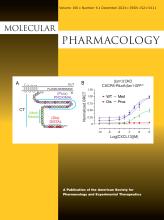Abstract
μ-opioid receptor (OPRM1) is mainly localized in lipid raft microdomains but internalizes through clathrin-dependent pathway. Our previous studies demonstrated that disruption of lipid rafts by cholesterol-depletion reagent blocked the agonist-induced internalization of OPRM1 and G protein-dependent signaling. The present study demonstrated that reduction of cholesterol level decreased and culturing cells in excess cholesterol increased the agonist-induced internalization and desensitization of OPRM1 respectively. Further analyses indicated that modulation of cellular cholesterol level did not affect agonist-induced receptor phosphorylation, but rather membrane translocation of β-arrestins. The translocation of β-arrestins was blocked by cholesterol reduction and the effect could be reversed by incubating with cholesterol. OptiPrep gradient separation of lipid rafts revealed that excess cholesterol retained more receptors in lipid raft domains and facilitated the recruitment of β-arrestins to these microdomains upon agonist activation. Moreover, excess cholesterol could evoke receptor internalization and protein kinase C-independent extracellular signal-regulated kinases activation upon morphine treatment. Therefore, these results suggest that cholesterol not only can influence OPRM1 localization in lipid rafts, but also can effectively enhance the recruitment of β-arrestins and thereby affecting the agonist-induced trafficking and agonist-dependent signaling of OPRM1.
- Opioid
- Lipid rafts/microdomains
- Desensitization/uncoupling
- Sequestration/Internalization
- GRKs, barrestins
- Phosphorylation/Dephosphorylation
- Received December 30, 2010.
- Revision received April 22, 2011.
- Accepted April 25, 2011.
- The American Society for Pharmacology and Experimental Therapeutics






